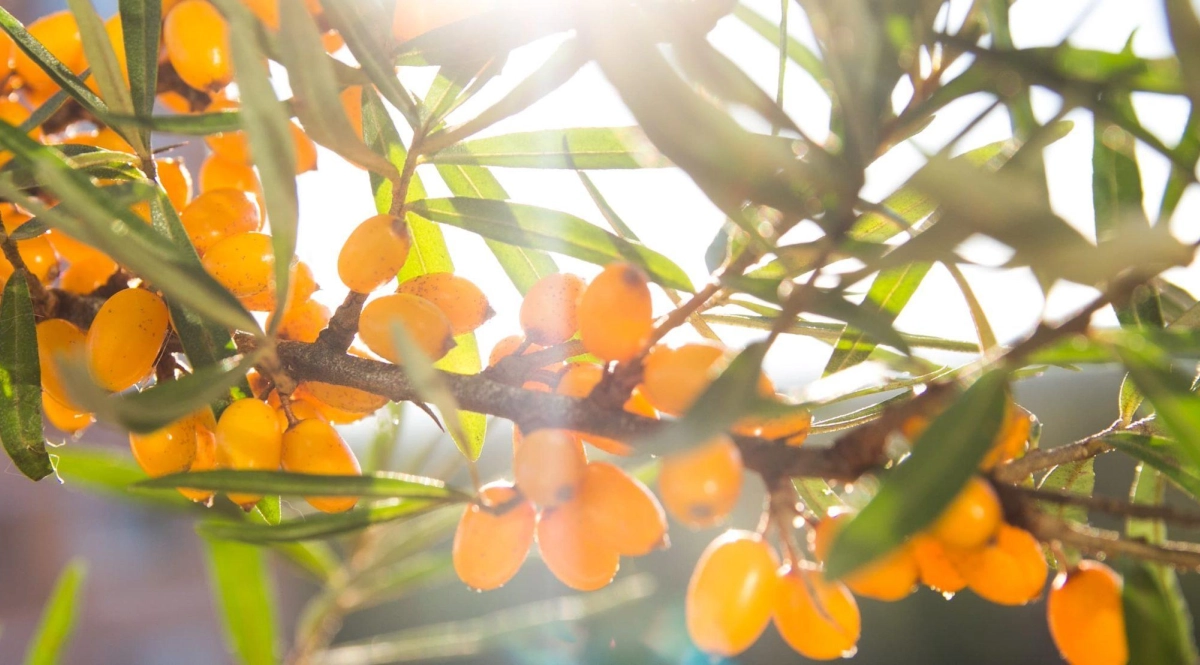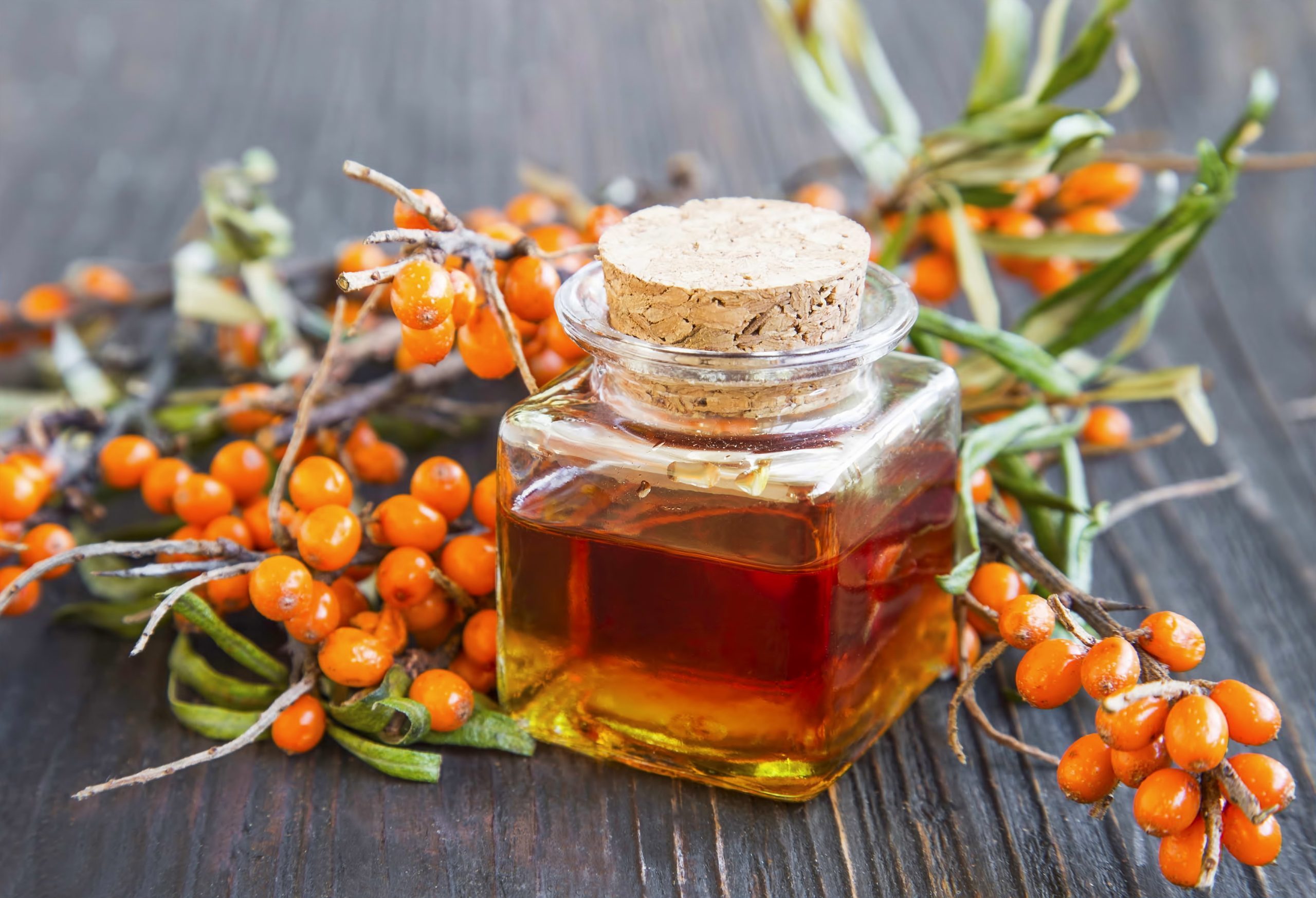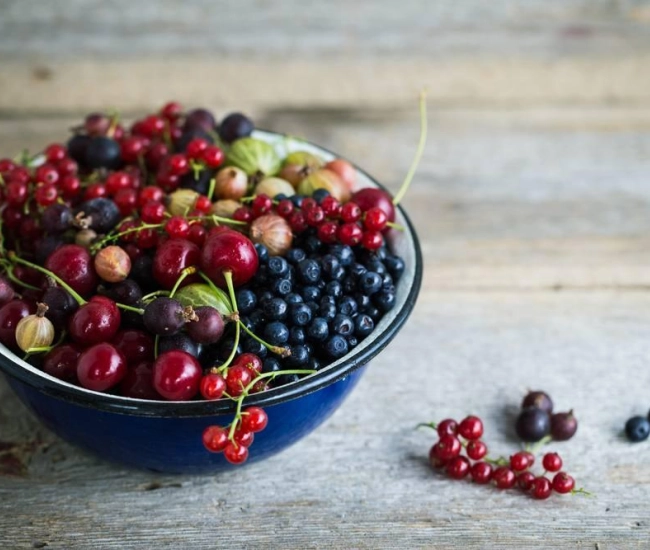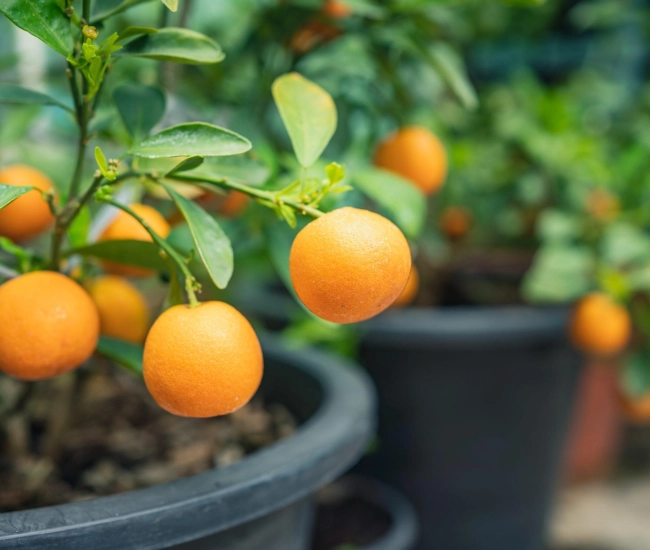
Are you familiar with sea buckthorn? Still relatively unknown in Quebec, this shrub is as interesting for its decorative aspect as for the fruits it produces. The sea buckthorn has a dense, slightly spreading growth habit. Its gray branches are covered with thorns and bear blue-gray leaves with a silvery underside that can resemble those of willows. In the fall, they produce masses of small, highly vitamin-rich orange fruits with multiple uses. Fruits that are not harvested remain on the branches through the winter and provide an excellent food source for birds. Let's discover this shrub that is gaining popularity.
CULTIVATION OF SEA BUCKTHORN
Sea buckthorn is not fussy. It can be planted in just about any type of soil, but it prefers sandy, well-drained soils. Even though it is not native to this area, sea buckthorn adapts very well to the harsh Quebec climate, can tolerate cold and wind, and is resistant to drought. Planted in full sun, it will produce a multitude of delicious and ultra-vitamin-rich small orange fruits.
Sea buckthorn has extensive roots that develop very quickly, making it a plant of choice for combating soil erosion. It is also very useful in degraded soils as it has the ability to fix atmospheric nitrogen and helps to conserve other essential nutrients for plants. It is often found in hedges, flower beds, and even along roadsides, as de-icing salt does not have much effect on it.
Sea buckthorns are dioecious, meaning that female and male flowers grow on different shrubs. Therefore, at least two, one of each sex, must be planted to have flowers, and only the females will bear fruit. Since pollination is done by wind and not by insects, it is recommended to leave at least 2 meters between individuals. Planting is done in spring or late summer.
MAINTENANCE OF SEA BUCKTHORN
The year following planting, the new plants need to be watered regularly. Once well established, they tolerate drought. As sea buckthorn has nitrogen-fixing capacity, fertilization is not necessary. In the fall, it is sufficient to prune the long branches that have no branching, those that overlap, and the suckers that can quickly become invasive.
Sea buckthorn can also be pruned to control its height. Some cut complete branches to facilitate fruit picking, which is well protected by the plant's thorns. However, be aware that the fruits grow on two-year-old wood, so they will not grow on the current year's shoots.
BENEFITS OF SEA BUCKTHORN
Still little known and used in Quebec, sea buckthorn is found in various forms in Asia and Europe. The bright orange berries are packed with vitamins and nutrients. They are notably richer in vitamin C than oranges, and their vitamin E content exceeds that of wheat and soy. They are powerful antioxidants. More and more chefs are using sea buckthorn berries to flavor their dishes. They are cooked into syrup, sauce, jam, or sorbet. Their tangy and slightly sweet taste can be surprising if you consume sea buckthorn fruits in their natural state!
 Sea buckthorn is also very rich in carotenoids and thus has an impact on skin aging. It is therefore used in large quantities in the composition of creams and other body products.
Sea buckthorn is also very rich in carotenoids and thus has an impact on skin aging. It is therefore used in large quantities in the composition of creams and other body products.
In Europe and Asia, sea buckthorn oil is used in several medications to treat burns, wounds, and other skin issues. Increasingly, sea buckthorn is found as a medicinal ingredient in various forms.
Sea buckthorn is an ornamental and nourishing shrub with multiple virtues to discover, both for the environment and for health. Learn more about this plant from your Passion jardins garden center advisor.
Tips and advice



